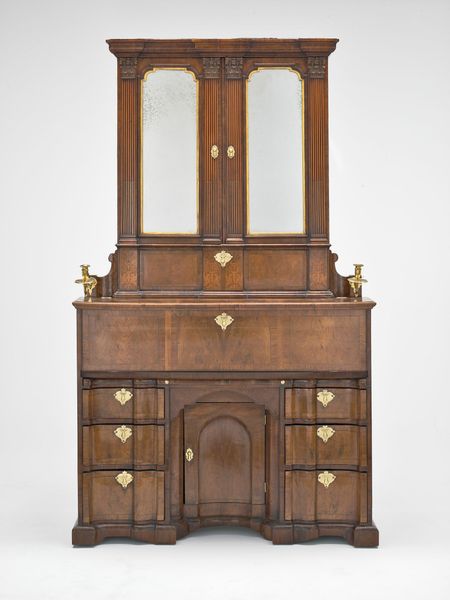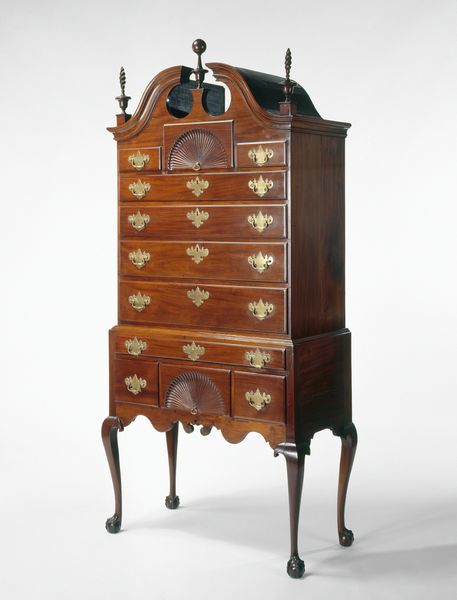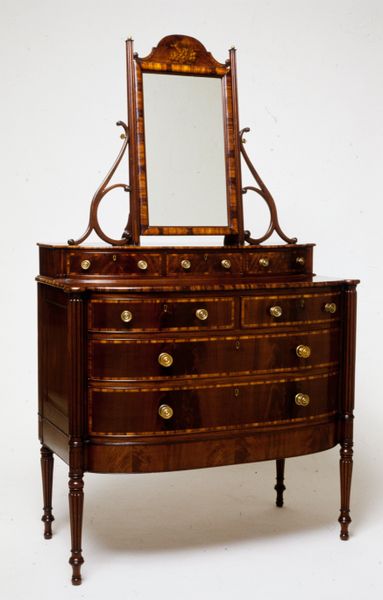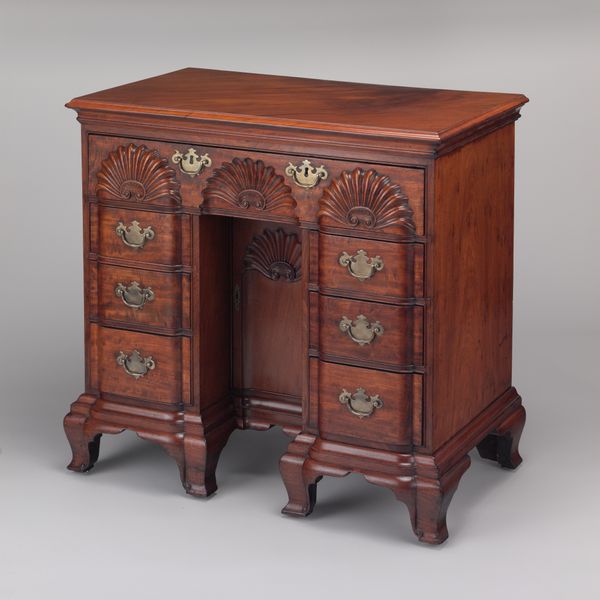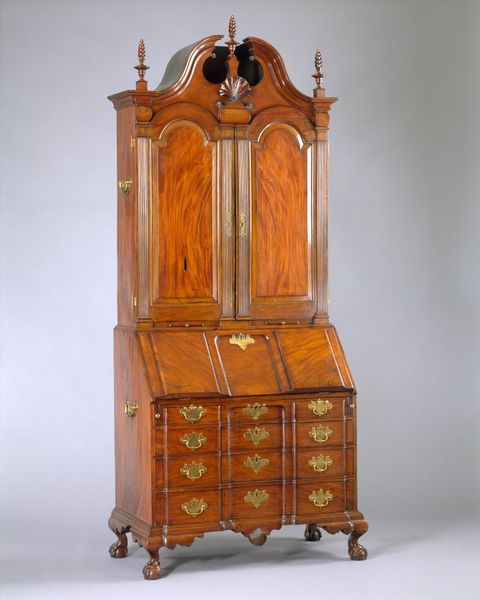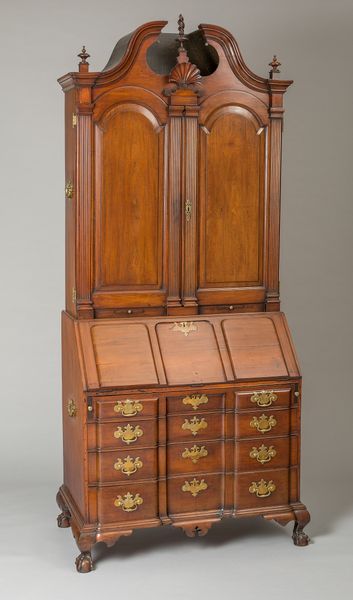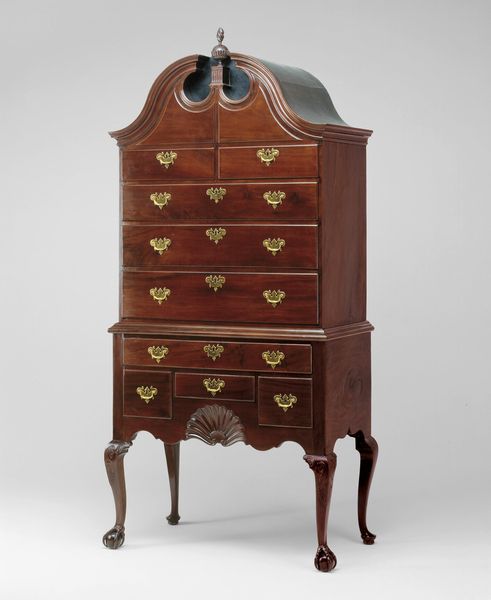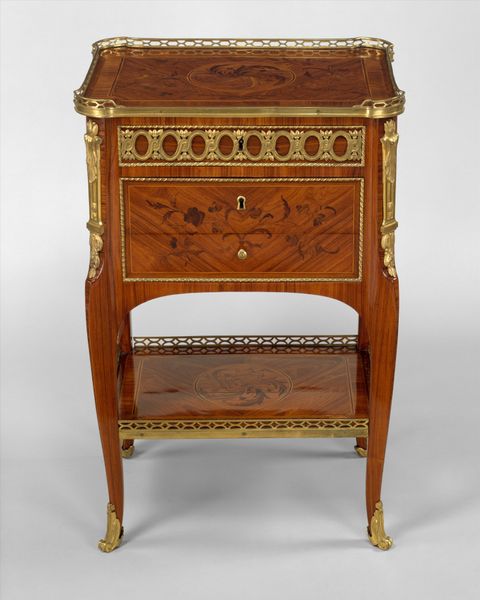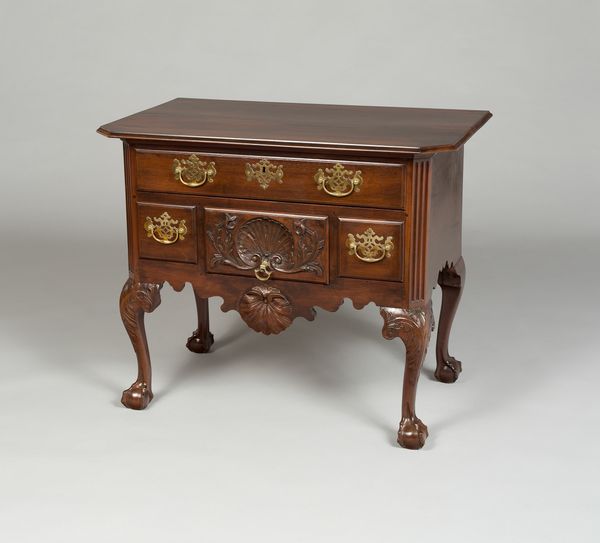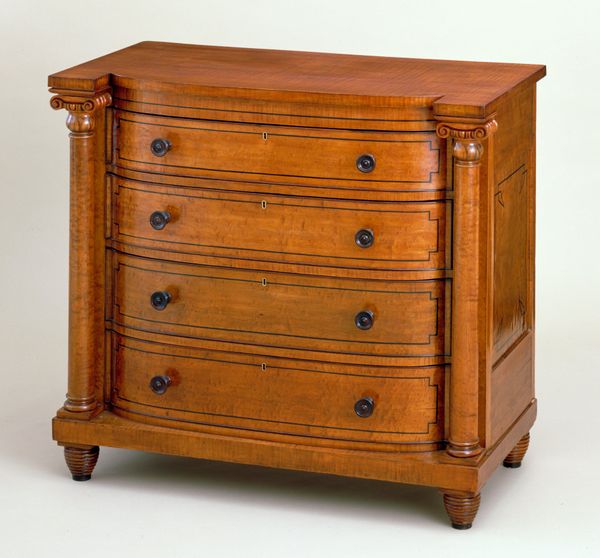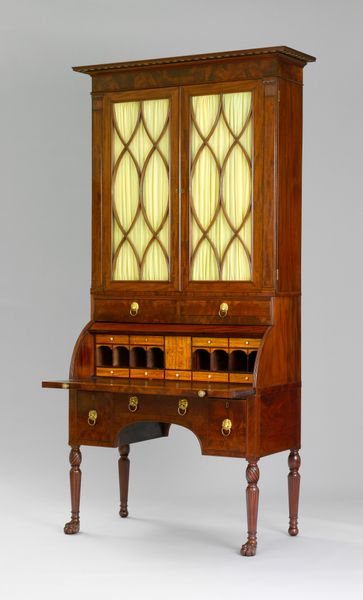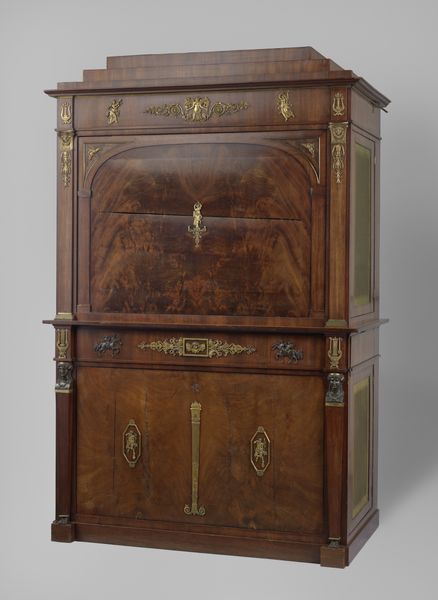
wood
#
wood texture
#
baroque
#
furniture
#
wood background
#
wood
#
decorative-art
Dimensions: 228.6 × 104.1 × 61.3 cm (90 × 41 24 1/8 in. )
Copyright: Public Domain
Curator: This is a Desk and Bookcase, dating between 1700 and 1735. The piece resides here at the Art Institute of Chicago, crafted from wood in the Baroque style. Editor: It feels so austere. The polished wood gives off a palpable sense of weight and authority. But it's beautiful too. What kind of social rituals surrounded this object? Curator: Likely considerable labor and craftsmanship. Think about the felling of the trees, the milling of the lumber, the joinery... These pieces speak to the economies that supported these aristocratic tastes. Editor: Precisely. Imagine the disparity of the labor required against those who might've utilized the desk for correspondence—governing through writing, enacting policies that impacted entire communities, likely while being propped up by exploited labor! Was the wood sourced locally? Curator: More research would need to be done to determine the precise species of wood and its origin, which speaks to early modern trade networks, global exploitation, and colonization. I do agree it evokes an almost tyrannical ambiance in how it takes up so much space. Editor: Its imposing size isn’t accidental. I suspect the dark wood, coupled with that almost severe geometry, aimed to convey power, exclusivity. It also speaks to an economy of permanence when so many lacked such privileges. What were the assumed literacy levels of the intended user? Did gender play a role? Curator: Access to writing implements and knowledge were restricted historically, even among the privileged. I suspect we could learn a lot about societal expectations by tracing the biographies of those who owned similar desks. Who got to write, what kind of access was there for different members of the household? Editor: And even what was written versus what could be written? It could be fruitful to juxtapose those narratives with those who may never have had the opportunity to use such a desk. I can’t help but see such objects as symbolic reminders of inherent systemic imbalances. Curator: A functional item refashioned into a vessel of historical insight... a study in how labor and privilege are visually rendered. Editor: Yes, it is this piece's imposing materiality set against potential use—and conversely, the history of societal imbalances in access—that intrigues me the most.
Comments
No comments
Be the first to comment and join the conversation on the ultimate creative platform.
